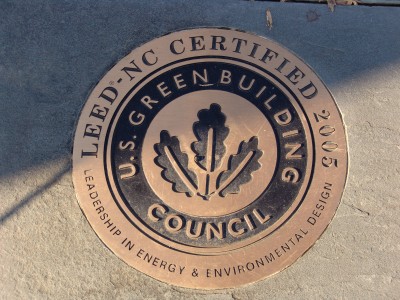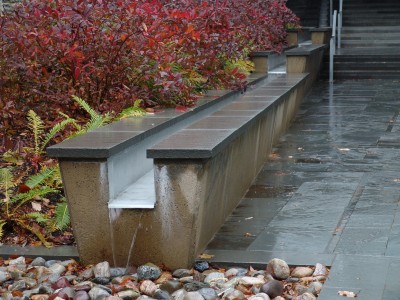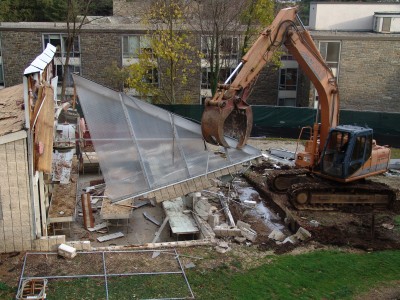What is LEED Certification?
LEED certification is a “green” buzz word you may have stumbled across in the past several months, but you may be confused as to its purpose and importance. LEED stands for Leadership in Energy and Environmental Design.
The U.S. Green Building Council (USGBC) developed the LEED Green Building Rating System in 1999 to help improve the quality of buildings and their impact on the environment. Buildings in the United States use one-third of our total energy, two-thirds of our electricity, one-eighth of our water, and transform land that provides valuable ecological resources. Using green design principles helps reduce the negative impacts of buildings. Green design provides numerous benefits including: making a positive impact on public health and the environment, reducing operating costs, enhancing building and organizational marketability, potentially increasing occupant productivity and helping to create a sustainable community. (LEED for New Construction and Major Renovations Version 2.2 October 2005)
This certification is being pursued by many non-profit and higher education organizations across the nation because it recognizes the organization’s commitment to environmental issues and sustainable living, has third party validation of achievement, and is a great promotional tool. Swarthmore College is one among many liberal arts schools embracing the idea of LEED certification for new construction.
Swarthmore College’s first and only LEED certified building is the Science Center completed in 2005. The Science Center features a cistern to collect rain water that is used to irrigate the surrounding gardens. The Science Center also features infiltration beds to capture and channel rain water. Click here to learn about the many “green” features of the Science Center.
LEED certification levels are based on the number of points earned in areas titled: sustainable sites, water efficiency energy and atmosphere, materials and resources, indoor environmental quality, and innovation and design process. We hope to build Swarthmore College’s first silver certified LEED building with the construction of the Wister Education Center and Greenhouse. The LEED levels range from certified to platinum.
Visit the blog in the upcoming months as we chronicle the process of receiving the 33 to 38 points needed to receive silver level certification. We hope to implement green design components such as parking for fuel efficient vehicles, designing a rain garden and green roof, reusing material harvested from the site prior to construction, and much more. Stay tuned as we explore the process of building a LEED certified building and its impact on the environment and community.








Libby | leed certified
Posted at 13:36h, 25 FebruaryThis is a great article. Good luck in getting the building leed certified. And wow, silver level certification would be great. I’m glad more and more developers and schools are focusing on the leed certification and the over impact on our environment. Good job!
Becky Robert
Posted at 15:23h, 25 FebruaryLibby,
Thank you for the note of encouragement. We are equally excited to able to reach the silver certification. Check out our next post on our progress. http://blogs.scottarboretum.org/gardenseeds/2009/02/leed-accredited-professionals/